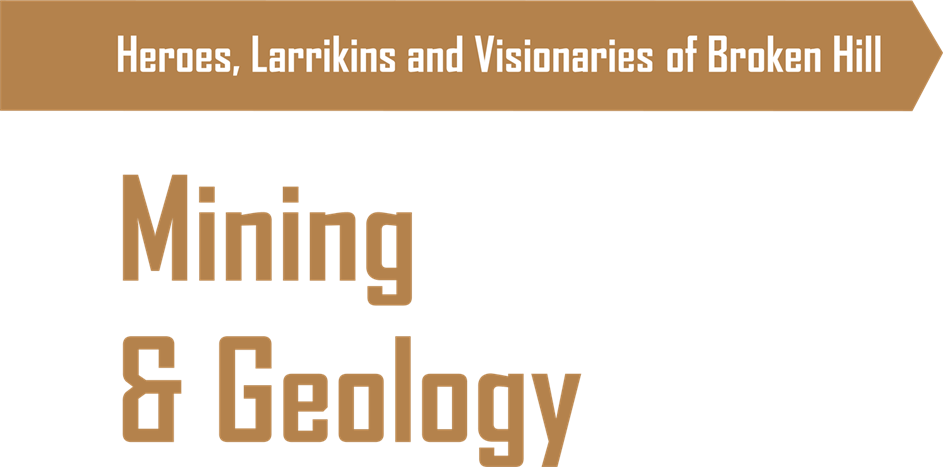Mining & Geology

Broken Hill’s iconic lead-zinc-silver orebody formed as a result of volcanic activity about 1,700 million years ago and has one of the most diverse collections of minerals in the world. The ore body, known as the Line of Lode, is a 7km long arc, 220m wide. Its depths plunge more than 1.5km into the ground. The Traditional Owners, the Wilyakali, called this Willyama, or ‘Broken Hill’, and its mining and geology success story is, literally, as old as the hills.
The 1883 discovery of silver ore by boundary rider Charles Rasp, followed soon after by the formation of BHP, created wealth and status, divided workers and masters, and led to the beginnings of unionism and the Labor movement. Between 1900 and 1908, up to 13,000 tons of ore were extracted by BHP per week and, by 1939 when BHP left Broken Hill, they had mined 12.3 million tons of ore and turned £30 million profit.
Mining innovation transformed Broken Hill from a rugged outpost into the epicentre of national and then international mining. The industrial boom that BHP started attracted geologists, scientists, engineers and mining professionals. Innovations like open-cut mining, electric trams in mines, froth flotation and land regeneration, to name only a few, changed the face of the industry globally.
The history of Broken Hill’s geological riches and mining boom is barely a story without the people who profited, innovated and created change. Of the original syndicate of seven BHP shareholders, George McCulloch stands out for his social conscience and his investment in the community that helped to make his fortune. Harry Campbell, an Aboriginal miner, swung the hammer that revealed silver ore just below the ironstone. The find became known as the Big Mine: shorthand for the largest silver mine in the world.
The Amalgamated Miner’s Association (AMA) played an important role in the human side of the mining story. AMA president Richard Sleath stood up to the directors of BHP, winning a shorter, forty-six-hour, working week for miners. He sat on the board of inquiry into the alarmingly high instances of lead poisoning at the silver-lead mines.
Where there are minerals there are mineralogists. One of earliest enthusiasts was Edward Aldridge, publican of the Duke of Cornwall. Aldridge acquired a collection of thousands of minerals, allegedly in exchange for beer. Another early mineral collector, industrialist Sir Maurice Mawby, had diplomas in metallurgy and geology and identified seventeen rare minerals amongst the 150 found in the Broken Hill lodes. A generation later, award-winning geological scientist David Branagan and mineral artist and ex-miner Bushy White carried on the passion for collecting minerals and acquiring knowledge of them.
With several mines still operational, Broken Hill remains the longest continuously lived‐in mining community in Australia’s history. The Broken Hill mines continue to offer up riches to power our machines and to empower Australians.
Audio transcript available.